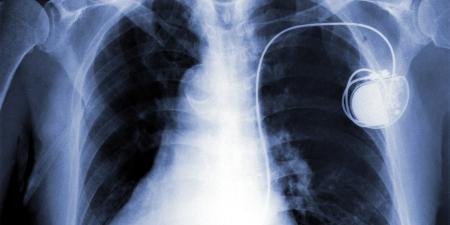Abstract
This article examines the history of device oversight by the US Food and Drug Administration (FDA). Significant regulatory changes occurred in response to injuries caused by Dalkon Shield intrauterine devices. This article summarizes those changes as well as continued efforts by the FDA to strengthen device oversight and address areas of concern.
Genesis of Device Oversight
The dramatic expansion of device use in health care demands that clinicians understand device regulation and its strengths and weaknesses as a key ethical and clinical responsibility. In 2018, the US Food and Drug Administration (FDA) approved more than 100 novel devices, a number that surpassed the prior year’s record and represented a fourfold increase over 2009.1 Medical product oversight began with a focus on food and medications during the early 20th century, spurred by public concern about the danger posed by common food additives, such as formaldehyde.2 As a result, the Pure Food and Drug Act was signed into law in 1906,3 creating a federal entity that would become the FDA. The Federal Food, Drug, and Cosmetic Act of 1938 authorized product oversight by the FDA,4 but even with amendments5 in 1962 inspired by the tragic health consequences of sulfanilamide6 and thalidomide,7 the FDA did not regulate devices until 1976, when complications associated with the Dalkon Shield spurred new legislation.
Lessons From the Dalkon Shield
A contraceptive device inserted into a woman’s uterus for pregnancy prevention, the Dalkon Shield was marketed to American women beginning in 1971 as a better alternative to contraceptive pills.8 Its use skyrocketed, with approximately 2.2 million devices implanted in American women by 1974.9 Due to limitations in regulatory requirements at that time, no federal oversight of the device’s premarket assessment occurred.10,11 Postmarket research revealed a 4.7% pregnancy rate and a 6.3% rate of device expulsion (ie, displacement from its proper uterine position) in Dalkon Shield users—far higher than the rates touted by the manufacturer.12 Furthermore, women who became pregnant were at higher risk for complications, including septic pregnancy and maternal death.13 Despite reports of significant morbidity and mortality associated with use of the device, removal of the Dalkon Shield from the market was slow; voluntary recall was not issued until late May of 1974, months after the manufacturer became aware of hazards.14
The importance of pre- and postmarket device regulation and the dangers of decentralized regulatory authority were illuminated by the Dalkon Shield, leading to the passage of the Medical Device Amendments of 1976.15 These amendments assigned ultimate regulatory authority for devices to the FDA; established a 3-category, risk-based classification system for devices (I, II, III); and required postmarket adverse events reporting. Two regulatory pathways for devices were also established: premarket approval (PMA) and premarket notification, known as the 510(k) pathway. While most high-risk class III devices required PMA based on evaluation of their safety and effectiveness prior to use in clinical practice16 (similar to drugs17,18,19),devices for which PMA was not required could utilize the 510(k) pathway,20 discussed in more detail below.
Continued Framing of FDA Oversight
In 1982, the Center for Devices and Radiological Health (CDRH) was formed within the FDA to regulate devices and radiation-emitting products.21 The Safe Medical Devices Act (SMDA)22 of 1990 defined substantial equivalence to a predicate device (a device already on the market) as a standard for clearing devices utilizing the 510(k) pathway. A 510(k)-cleared device must (1) have the same intended use as a predicate device and (2) have the same technical characteristics or, if different, not raise questions about safety and effectiveness and demonstrate comparable safety and effectiveness to the predicate device through performance data submitted to the FDA.20 In addition, the SMDA introduced postmarket surveillance requirements for manufacturers, mandated adverse event reporting for medical facilities, established penalties for violations, and granted the FDA recall authority.22 Three recall categories (I, II, III) based on health hazard risk were created, with class I considered the highest risk.22 Subsequent legislation included requirements to establish a unique device identification system and to include devices in the Sentinel System of postmarket safety surveillance.23,24,25
As requirements became more stringent, however, concerns arose that regulation could stifle innovation and deprive patients of timely access to lifesaving devices.10,26 Subsequent legislation introduced a “least burdensome” approach to premarket review,27 the De Novo program for novel low- to moderate-risk devices,24 and reduction of the PMA cost burden for small business manufacturers.28 More efficient and flexible approaches were outlined in 2016, with the 21st Century Cures Act29 providing support for breakthrough devices and expanding criteria for humanitarian-use devices.
Pre- and Postmarket Oversight
Despite increased regulatory oversight by the FDA and expansion of device use in patient care, safety concerns can evolve over the lifespan of some devices. Recalls of cardioverter-defibrillator leads30 and metal-on-metal hip implants,31 complications with urogynecologic surgical mesh32 and a permanent implantable contraceptive device,33 anaplastic large cell lymphoma association with breast implants,34 and potential mortality associated with paclitaxel-containing devices35,36 all reinforce the FDA’s critical ongoing role in public protection.
Devices or materials have been cleared based on their substantial equivalence to predicates that were recalled due to adverse events.
The 510(k) pathway, particularly the substantial equivalence standard, has faced criticism. For devices cleared or approved between 1992 and 2012, 510(k)-cleared devices were 11.5 times more likely to face recalls than devices approved through the more stringent PMA process.37 The percentage of devices utilizing clinical evidence to support substantial equivalence on the basis of safety and effectiveness was 27% for otolaryngologic devices cleared between 1997 and 2016.38 Additionally, manufacturers of just 16% of devices in a sample of 510(k)-implanted devices cleared from 2008 to 2012 offered publicly available documentation of scientific evidence used to establish substantial equivalence, despite FDA requirements to do so.39
Furthermore, devices or materials have been cleared based on their substantial equivalence to predicates that were recalled due to adverse events, as was the case for 16% of surgical meshes cleared between 2013 and 2015.40 A 2011 Institute of Medicine report concluded that, with some exceptions, “the 510(k) clearance process is not intended to evaluate the safety and effectiveness of medical devices” but rather to assess substantial equivalence to predicate devices.17 Such concerns are clinically and ethically important, as premarket notification continues to be the primary regulatory pathway for many devices. In 2017, 3173 devices—82% of the total FDA-approved or cleared devices that year—entered the market via the 510(k) pathway.41
Postmarket surveillance, a combination of active and passive surveillance, has also faced criticism as being too narrowly focused or hampered by incomplete data. Although possible causal relationships between adverse events and a device have been successfully detected during postmarket surveillance, there is currently no comprehensive system for the FDA to field robust, reliable postmarket data.42,43
Comparisons have been made between the safety and performance requirements for devices and drugs. Drug approval includes demonstration of “substantial evidence” of safety and efficacy through clinical trials.17,18,19 Moreover, for drugs, the FDA Sentinel Initiative25,44 utilizes well-coordinated, standardized database distribution and data collection structures with multiple partners and has been a robust part of FDA active postmarket surveillance.45,46
Strengthening and Modernizing
Establishing a robust system of medical device postmarket surveillance and evaluation is a critical policy need that has been a major focus of the FDA, along with strengthening and modernizing premarket regulatory processes. This effort includes a focus on the 510(k) pathway, a unique device identification (UDI) system, use of real-world data (RWD) and real-world evidence (RWE), and, in collaboration with other stakeholders, the development of the National Evaluation System for Health Technology (NEST).46
510(k) pathway. Throughout the last decade, the FDA has standardized device review procedures,41 introduced a “refuse-to-accept” policy based on submission completeness,47 and added substantial equivalence documentation requirements for 510(k) clearance.48 The FDA’s Safety and Performance Based Pathway offers manufacturers of well-understood device types an option to use FDA-identified performance criteria to demonstrate safety and effectiveness.49,50 To more fully address safety concerns stemming from use of recalled or high-risk predicates, nearly 1500 devices have been eliminated for use as predicates in 510(k) submissions since 2012.41 Use of the 510(k) pathway has also been curtailed for new high-risk devices,51,52 with no class III devices cleared for market via premarket notification in 2018.41 Recommendations have also been made that the Safety and Performance Based Pathway become mandatory for eligible devices, commonly recalled device types, and possibly all 510(k) devices.50,53
UDI system. Development of a UDI system was prompted by the FDA’s Unique Device Identification System Rule of 2013,54 which required manufacturers to assign UDIs to devices. This requirement has facilitated development of a standard for electronic health record (EHR) documentation of device implants in patients,55 adverse event reporting, and recall notification. UDI availability and use also supports improved aggregation of postmarket data from EHRs, payer claims, and clinical registries, enabling more robust postmarket surveillance.56 A UDI implementation roadmap for implantable devices for health care organizations has been created,57 and research has demonstrated successful UDI transmission via claims to payers.58 One ongoing challenge is that, while moderate- and high-risk devices now have UDIs as mandated by the Unique Device Identification System Rule,54 there is no requirement for UDI documentation during the course of clinical care, which is critical for broad UDI availability and use. Although some organizations are documenting UDIs without a mandate, policy updates will be required to advance broader applications.
RWD and RWE. Use of RWD and RWE in regulatory decision making and postmarket surveillance of devices has been an ongoing FDA priority, prompting the FDA to issue guidance59 and convene an expert workshop in 2017.60 Expanded UDI utilization would support the FDA’s focus on RWD, which includes patient characteristics and health outcomes from multiple sources (EHRs, claims databases, and clinical registries).61 Use and analysis of RWD from clinical trials and observational studies can be used to generate RWE, the clinical information needed to determine device use risks and benefits.61 One historical limitation of RWD and RWE, however, has been data quality and analysis validity; both are current foci of the NEST Coordinating Center (NESTcc),62 the FDA’s RWE program,63 and collaborative efforts.64
NESTcc. Establishing a national evaluation system for health technology was included in the CDRH’s 2016-17 Strategic Priorities.65 NESTcc is a public-private organization consisting of multiple partners (health systems, academia, payers, registries, and research networks).66 NESTcc is advancing the use of RWD and RWE in research projects,67,68,69 with the goal of informing device evaluation and regulation.70
Conclusion
As the Dalkon Shield case illuminates, patient harm has been a driver of change in device oversight and regulation. This historical overview has summarized key strengths and weaknesses of the federal legislative response, which has attempted to protect patient safety while fostering innovation. Ongoing efforts by the FDA to strengthen and modernize pre- and postmarket regulatory processes aim to advance device safety and enhance patient outcomes.
References
-
Statement from FDA Commissioner Scott Gottlieb, MD, and Jeff Shuren, MD, director of the Center for Devices and Radiological Health, on a record year for device innovation. News release. US Food and Drug Administration; January 28, 2019. Accessed October 26, 2020. https://www.fda.gov/news-events/press-announcements/statement-fda-commissioner-scott-gottlieb-md-and-jeff-shuren-md-director-center-devices-and-1
- Lewis C. The “Poison Squad” and the advent of food and drug regulation. FDA Consum. 2002;36(6):12-15.
-
Pure Food and Drug Act, Pub L No. 59-384, 34 Stat 768 (1906).
-
Federal Food, Drug, and Cosmetic Act, 21 USC 301-399 (2000).
-
Kefauver-Harris Drug Amendments, 21 USC 352(n) (2000).
- Ballentine C. Taste of raspberries, taste of death: the 1937 Elixir sulfanilamide incident. FDA Consum. 1981;15(5):18-22.
- Kim JH, Scialli AR. Thalidomide: the tragedy of birth defects and the effective treatment of disease. Toxicol Sci. 2011;122(1):1-6.
- Roepke CL, Schaff EA. Long tail strings: impact of the Dalkon Shield 40 years later. Open J Obstet Gynecol. 2014;4(16):996-1005.
-
Hicks KM. Surviving the Dalkon Shield IUD: Women v the Pharmaceutical Industry. Teachers College Press; 1994.
-
Rome BN, Kramer DB, Kesselheim AS. Approval of high-risk medical devices in the US: implications for clinical cardiology. Curr Cardiol Rep. 2014;16(6):489.
- Curfman GD, Morrissey S, Drazen JM. A pivotal medical-device case. N Engl J Med. 2008;358(1):76-77.
- Jones RW, Parker A, Elstein M. Clinical experience with the Dalkon Shield intrauterine device. BMJ. 1973;3(5872):143-145.
- Vujcich J, Korman B. Second trimester septic abortion and the Dalkon Shield. Med J Aust. 1975;2(7):249-252.
- Culliton BJ, Knopman DS. Dalkon Shield affair: a bad lesson in science and decision-making. Science. 1974;185(4154):839-841.
-
Medical Device Amendments, Pub L No. 94-295, 90 Stat 539 (1976).
-
PMA approvals. US Food and Drug Administration. August 23, 2018. Accessed October 26, 2020. https://www.fda.gov/medical-devices/device-approvals-denials-and-clearances/pma-approvals
-
Institute of Medicine. Medical Devices and the Public’s Health: The FDA 510(k) Clearance Process at 35 Years. National Academies Press; 2011.
- Van Norman GA. Drugs, devices, and the FDA: part 1: an overview of approval processes for drugs. JACC Basic Transl Sci. 2016;1(3):170-179.
- Van Norman GA. Drugs and devices: comparison of European and US approval processes. JACC Basic Transl Sci. 2016;1(5):399-412.
-
Premarket notification 510(k). US Food and Drug Administration. March 13, 2020. Accessed October 26, 2020. https://www.fda.gov/medical-devices/premarket-submissions/premarket-notification-510k
-
A history of medical device regulation and oversight in the United States. US Food and Drug Administration. June 24, 2019. Accessed October 26, 2020. https://www.fda.gov/medical-devices/overview-device-regulation/history-medical-device-regulation-oversight-united-states
-
Safe Medical Devices Act, Pub L No. 101-629, 104 Stat 4511 (1990).
-
Food and Drug Administration Amendments Act, Pub L No. 110-85, 121 Stat 823 (2007).
-
Food and Drug Administration Safety and Innovation Act, Pub L No. 112-144, 126 Stat 993 (2012).
-
FDA’s Sentinel Initiative. US Food and Drug Administration. October 18, 2019. Accessed February 23, 2021. https://www.fda.gov/safety/fdas-sentinel-initiative
-
US Food and Drug Administration. Factors to consider regarding benefit-risk in medical device product availability, compliance, and enforcement decisions. Guidance for Industry and Food and Drug Administration staff. December 27, 2016. Accessed October 26, 2020. https://www.fda.gov/media/98657/download
-
Food and Drug Administration Modernization Act, Pub L No. 105-115, 111 Stat 2296 (1997).
-
Medical Device User Fee and Modernization Act, Pub L No. 107-250, 116 Stat 1588 (2002).
-
21st Century Cures Act, Pub L No. 114-255, 130 Stat 1033 (2016).
- Hauser RG, Abdelhadi R, McGriff D, Retel LK. Deaths caused by the failure of Riata and Riata ST implantable cardioverter-defibrillator leads. Heart Rhythm. 2012;9(8):1227-1235.
-
Smith AJ, Dieppe P, Vernon K, Porter M, Blom AW; National Joint Registry of England and Wales. Failure rates of stemmed metal-on-metal hip replacements: analysis of data from the National Joint Registry of England and Wales. Lancet. 2012;379(9822):1199-1204.
-
Urogynecologic surgical mesh implants. US Food and Drug Administration. July 10, 2019. Accessed October 26, 2020. https://www.fda.gov/medical-devices/implants-and-prosthetics/urogynecologic-surgical-mesh-implants
-
Essure benefits and risks. US Food and Drug Administration. January 1, 2020. Accessed October 26, 2020. https://www.fda.gov/medical-devices/essure-permanent-birth-control/essure-benefits-and-risks
- Leberfinger AN, Behar BJ, Williams NC, et al. Breast implant-associated anaplastic large cell lymphoma: a systematic review. JAMA Surg. 2017;152(12):1161-1168.
-
Rocha-Singh KJ, Duval S, Jaff MR, et al; VIVA Physicians, Inc. Mortality and paclitaxel-coated devices: an individual patient data meta-analysis. Circulation. 2020;141(23):1859-1869.
-
Farb A, Malone M, Maisel WH. Drug-coated devices for peripheral arterial disease. N Engl J Med. 2021;384(2):99.
- Day CS, Park DJ, Rozenshteyn FS, Owusu-Sarpong N, Gonzalez A. Analysis of FDA-approved orthopaedic devices and their recalls. J Bone Joint Surg Am. 2016;98(6):517-524.
- Rathi VK, Gadkaree SK, Ross JS, et al. US Food and Drug Administration clearance of moderate-risk otolaryngologic devices via the 510(k) process, 1997-2016. Otolaryngol Head Neck Surg. 2017;157(4):608-617.
- Zuckerman D, Brown P, Das A. Lack of publicly available scientific evidence on the safety and effectiveness of implanted medical devices. JAMA Intern Med. 2014;174(11):1781-1787.
-
Zargar N, Carr A. The regulatory ancestral network of surgical meshes. PLoS One. 2018;13(6):e0197883.
-
US Food and Drug Administration. FDA has taken steps to strengthen the 510(k) Program. November 2018. Accessed October 26, 2020. https://www.fda.gov/media/118500/download
-
US Food and Drug Administration. Public notification of emerging postmarket medical device signals (“emerging signals”). Guidance for industry and Food and Drug Administration staff. December 14, 2016. Accessed February 26, 2021. https://www.fda.gov/media/95125/download
- Ross JS. Strengthening medical device postmarket safety surveillance. JAMA Intern Med. 2015;175(8):1350-1351.
- Platt R, Brown JS, Robb M, et al. The FDA Sentinel Initiative—an evolving national resource. N Engl J Med. 2018;379(22):2091-2093.
-
Krupka DC, Wilson NA, Reich AJ, Weissman JS. The post-market surveillance system for implanted devices is broken. Here’s how CMS and the FDA can act now to fix it. Health Affairs Blog. April 23, 2021. Accessed April 26, 2021. https://www.healthaffairs.org/do/10.1377/hblog20210420.717948/full/
-
US Food and Drug Administration. Medical device safety action plan: protecting patients, promoting public health. Accessed October 26, 2020. https://www.fda.gov/media/112497/download
-
US Food and Drug Administration. Refuse to Accept Policy for 510(k)s. Guidance for Industry and Food and Drug Administration Staff. September 13, 2019. Accessed February 23, 2021. https://www.fda.gov/media/83888/download
-
US Food and Drug Administration. Benefit-risk factors to consider when determining substantial equivalence in premarket notifications (510(k)) with different technological characteristics. Guidance for industry and Food and Drug Administration staff. September 25, 2018. Accessed February 23, 2021. https://www.fda.gov/media/89019/download
-
Safety and performance based pathway. US Food and Drug Administration. December 10, 2020. Accessed February 26, 2021. https://www.fda.gov/medical-devices/premarket-notification-510k/safety-and-performance-based-pathway
- Rathi VK, Ross JS. Modernizing the FDA’s 510(k) pathway. N Engl J Med. 2019;381(20):1891-1893.
-
515 Program Initiative. US Food and Drug Administration. December 19, 2017. Accessed February 23, 2021. https://www.fda.gov/about-fda/cdrh-transparency/515-program-initiative
-
515 project status. US Food and Drug Administration. December 20, 2019. Accessed February 26, 2021. https://www.fda.gov/about-fda/cdrh-transparency/515-project-status
- Redberg RF, Dhruva SD. Moving from substantial equivalence to substantial improvement for 510(k) devices. JAMA. 2019;322(10):927-928.
-
Unique device identification system; final rule. Fed Regist. 2013;78(185):58786-58828.
- Salazar JW, Redberg RF. Leading the call for reform of medical device safety surveillance. JAMA Intern Med. 2020;180(2):179-180.
-
Unique device identification system (UDI system). US Food and Drug Administration. June 30, 2020. Accessed February 28, 2021. https://www.fda.gov/medical-devices/device-advice-comprehensive-regulatory-assistance/unique-device-identification-system-udi-system
-
Wilson N. Building UDI into Longitudinal Data for Medical Device Evaluation (BUILD): point of care capture of UDI for implantable devices final summary report and roadmap. MDEpiNet. June 28, 2019. Accessed June 4, 2021. http://mdepinet.org/wp-content/uploads/BUILD-Update.pdf
-
Zerhouni YA, Krupka DC, Graham J, et al. UDI2Claims: planning a pilot project to transmit identifiers for implanted devices to the insurance claim. J Patient Saf. Published online November 21, 2018.
-
US Food and Drug Administration. Use of real-world evidence to support regulatory decision-making for medical devices. Guidance for industry and Food and Drug Administration staff. August 31, 2017. Accessed February 23, 2021. https://www.fda.gov/files/medical%20devices/published/Use-of-Real-World-Evidence-to-Support-Regulatory-Decision-Making-for-Medical-Devices---Guidance-for-Industry-and-Food-and-Drug-Administration-Staff.pdf
-
Opportunities and gaps in real-world evidence for medical devices. Duke Margolis Center for Health Policy. April 26, 2017. Accessed February 23, 2021. https://healthpolicy.duke.edu/events/opportunities-and-gaps-real-world-evidence-medical-devices
-
Real-world evidence. US Food and Drug Administration. November 30, 2020. Accessed February 23, 2021. https://www.fda.gov/science-research/science-and-research-special-topics/real-world-evidence
- Fleurence RL, Shuren J. Advances in the use of real-world evidence for medical devices: an update from the national evaluation system for health technology. Clin Pharmacol Ther. 2019;106(1):30-33.
-
US Food and Drug Administration. Framework for FDA’s Real-World Evidence Program. December 2018. Accessed March 1, 2021. https://www.fda.gov/media/120060/download
-
Establishing a high-quality real-world data ecosystem day 1 & 2. Duke Margolis Center for Health Policy. July 13, 2020. Accessed February 23, 2021. https://healthpolicy.duke.edu/events/establishing-high-quality-real-world-data-ecosystem-day-1-2
-
Center for Devices and Radiologic Health. 2016-2017 strategic priorities. US Food and Drug Administration. Accessed February 23, 2021. https://www.fda.gov/media/95317/download
-
Research network. NEST Coordinating Center. Accessed July 12, 2021. https://nestcc.org/research-network/
-
Demonstration projects. NEST Coordinating Center. Accessed October 26, 2020. https://nestcc.org/demonstration-projects/
-
Test-cases. NEST Coordinating Center. Accessed October 26, 2020. https://nestcc.org/test-cases/
-
Emerging issues in UDI: a NEST collaborative community discussion. NEST Coordinating Center. Accessed February 23, 2021. https://nestcc.org/events/emerging-issues-in-udi-a-nest-collaborative-community-discussion/
-
National Evaluation System for Health Technology (NEST). US Food and Drug Administration. October 29, 2019. Accessed October 26, 2020. https://www.fda.gov/about-fda/cdrh-reports/national-evaluation-system-health-technology-nest



